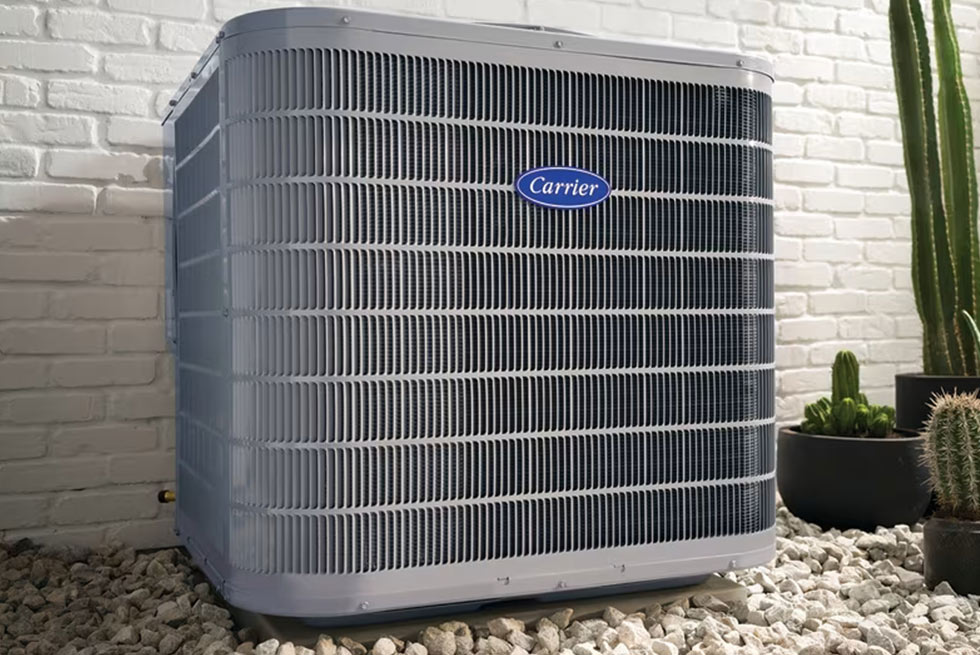R-454B Refrigerant: The Future of Cooling and Heating

The refrigerant in your HVAC system could make or break your contribution to combating climate change. Here’s a number to consider—78%. That’s how much less global warming potential (GWP) the new R-454B refrigerant has compared to its predecessor, R-410A. Starting in 2025, this groundbreaking refrigerant won’t just be an option—it’ll be the standard.
But what does that mean for you? Lower energy bills. A more efficient HVAC system. And yes, a greener planet. It’s a big leap forward for heating and cooling technology, and whether you’re upgrading soon or maintaining an older system, knowing about R-454B could save you money and future-proof your home.
What is R-454b?
R-454B is a new type of refrigerant designed to replace older ones like R-410A, which are used in many heating and cooling systems today.
Why the change? R-410A, while effective, has a high Global Warming Potential (GWP), meaning it contributes more to climate change. R-454B is far better for the environment with a GWP that’s 78% lower than R-410A.

Why Are We Switching to R-454B?
In simple terms: to protect the planet. Governments around the world, including the U.S., are phasing out older refrigerants like R-410A as part of efforts to fight climate change. By 2025, all new heating and cooling systems must use refrigerants with lower GWPs, like R-454B.
But don’t worry—the switch is part of a gradual process. Older systems that use R-410A will still be serviced and repaired for years to come, but new systems will use R-454B to help reduce environmental impact.
What Makes R-454B Better?

1. Environmentally Friendly
• R-454B has a much lower GWP than older refrigerants, meaning it’s less harmful to the environment.
• It doesn’t damage the ozone layer, just like the refrigerants we use today.
2. Energy Efficient
• Systems that use R-454B can be more efficient, meaning they use less energy to keep your home comfortable.
• Over time, this can lead to lower energy bills.
3. Safe to Use
• R-454B is classified as mildly flammable, but systems designed for it come with built-in safety measures like leak detectors.
• It’s also non-toxic, making it safe for homes and businesses.
4. Cost-Effective in the Long Run
• While the refrigerant itself may cost a bit more upfront, it’s expected to become cheaper as it becomes more common.
• Meanwhile, older refrigerants like R-410A will get pricier as they’re phased out.
What Does This Mean for You?
If You’re Upgrading: Starting in 2025, new air conditioners and heat pumps will come equipped with R-454B. These systems will work with your existing ductwork and wiring, so the installation process won’t change much.
If You Have an Older System: Don’t worry! Your current system can still be serviced and repaired with R-410A, though costs for those repairs may rise as the refrigerant becomes less available.
The Bottom Line
R-454B is a step forward in heating and cooling technology, offering an eco-friendly and efficient way to keep homes and businesses comfortable.
While the switch may seem like a big change, it’s designed to be smooth for homeowners.
When it’s time to upgrade your HVAC system, R-454B will be there to ensure your comfort while helping the planet.
If you’re considering an upgrade or have questions about R-454B, contact your USHA professional to learn more!
FAQs About R-454B
1. Can I use R-454B in my current air conditioner?
No, older systems that use R-410A aren’t compatible with R-454B. You’ll need a new system designed specifically for R-454B.
2. Is R-454B safe for my home?
Yes! While it’s slightly more flammable than older refrigerants, modern systems are designed with safety features to prevent leaks and handle it securely.
3. Will R-454B cost more?
Initially, yes. However, as it becomes more widely used, prices are expected to drop. Plus, its improved efficiency can help save on energy bills over time.
4. When will R-454B systems be available?
Major brands are already rolling out systems designed for R-454B, and by 2025, all new systems will use it.
5. How does R-454B help the environment?
R-454B has a much lower impact on global warming compared to older refrigerants, helping us combat climate change while keeping homes comfortable.
6. What other names are used for R-454B?
The commonly known names for R-454B are primarily Opteon™ XL41, Solstice® 454B, and Puron® Advance, as these are trademarked by major manufacturers like Chemours, Honeywell, and Carrier. While these are the primary branded names, the refrigerant itself is universally recognized as R-454B in industry standards.
These names may vary depending on the manufacturer, but they all refer to the same refrigerant blend of R-32 and R-1234yf.
7. Is R-454B better than R-410A?
R-454B has several advantages over R-410A, especially in terms of environmental impact. With a GWP 78% lower than R-410A, R-454B is significantly better for the environment.
However, performance-wise, while R-454B generally shows improved efficiency and COP (Coefficient of Performance), in some cases, its cooling capacity can be slightly lower than R-410A, depending on the system and usage scenario.
For instance, R-454B may perform slightly less in terms of capacity in very high-load conditions, but it is generally a more sustainable choice. As such, its adoption is encouraged for new HVAC systems, especially as R-410A is phased out by 2025.
